The Roots of Gothic: Historical Foundations
The term "Gothic" has its roots in history, specifically with the nomadic Germanic tribes known as the Goths. These tribes played a significant role in the decline and fall of the Roman Empire in the 5th century AD.
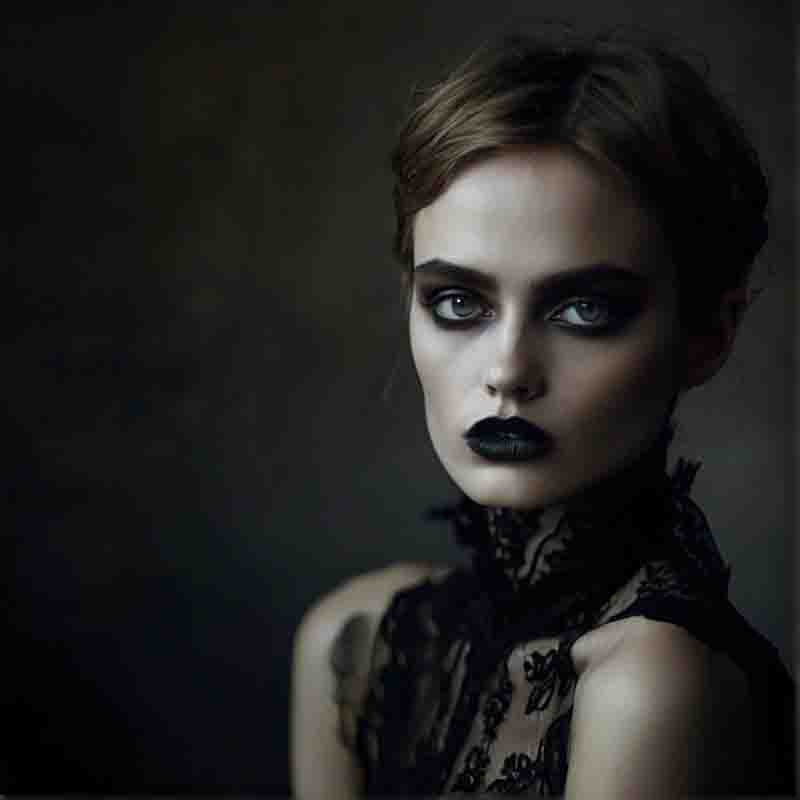
Gothic fashion is a vibrant and constantly evolving subculture that goes beyond mere clothing and accessories.
The Gothic tribes, comprising the Visigoths and Ostrogoths, embarked on migrations and invasions that reshaped the geopolitical landscape of Europe.
Their impact was felt as far as Spain and Italy, leaving an indelible mark on the course of history.
While initially used to describe a particular group of people, the term "Gothic" evolved over time to encompass broader cultural and artistic movements.
Edgar Allan Poe, the American author and poet, is considered one of the most influential figures in the Gothic genre.
Beyond the written word, Gothic aesthetics permeate the world of fashion, creating a subculture that embraces the elegance of darkness.
Traditional Gothic fashion, with its Victorian influences, corsets, lace, and dark hues, has evolved into a diverse and avant-garde movement.
From the DIY ethos of customization to the futuristic elements of Cybergoth, Gothic fashion is a dynamic expression of counterculture, individuality and rebellion.
The subculture's impact on mainstream fashion is undeniable, with Gothic influences evident in advertising campaigns, perfume ads, and the rise of Gothic-inspired footwear.
Gothic fashion is in part related to the vamp style, with the two aesthetics waltzing in the shadows and sharing a penchant for the dark and dramatic.
The Gothic aesthetic is not merely a style; it's a statement that resonates with those who seek to embrace the shadows and defy conventional norms.
Rooted in the dark undercurrents of punk rock and the theatrical elements of glam rock, gothic rock bands like Bauhaus, Siouxsie and the Banshees, and The Cure infused their music with a haunting sense of romanticism and a fascination with themes of death, alienation, and the macabre.
Beyond architecture and literature, "Gothic" took on a new dimension in the late 20th century as a subculture. This movement, known as the goth subculture, is characterized by distinctive fashion, often featuring dark clothing, makeup, and accessories. Goths are also associated with a particular sensibility in music, including genres like gothic rock.
12 Important Facts to know about Gothic Fashion
-
Historical Roots: Gothic fashion traces its roots back to the Victorian era, with influences from Gothic literature, architecture, and art of the time, particularly the Gothic Revival movement.
-
Subcultural Diversity: There are various subcultures within Gothic fashion, including Victorian Goths, Romantic Goths, traditional Goths, cybergoths, nu goths, and pastel goths, each with its own distinct aesthetic and cultural influences.
-
Key Elements: Classic elements of Gothic fashion include black clothing, lace, corsets, leather, velvet, and dark, dramatic makeup.
-
Evolution Over Time: Gothic fashion has evolved over time, incorporating elements from diverse art movements, literature, and music genres, such as punk, industrial, and metal.
-
Contemporary Expressions: In addition to traditional Gothic styles, contemporary expressions of Gothic fashion include cybergoth, characterized by neon colors, futuristic elements, and industrial accessories, and nu goth, which blends traditional Gothic elements with modern streetwear.
-
Material and Construction: Common materials used in Gothic clothing include velvet, lace, leather, and PVC. Traditional craftsmanship techniques like corsetry and tailoring are often employed to create intricate and customized pieces.
-
DIY Culture: DIY (do-it-yourself) fashion and customization are prevalent within the Gothic fashion community, allowing individuals to create unique pieces and express their personal style within the Gothic aesthetic.
-
Influential Designers and Brands: There are several influential designers and brands within the Gothic fashion scene, known for their innovative designs and contributions to the subculture.
-
Social Media and Community Engagement: The gothic fashion community is active on social media, in forums and at events, where enthusiasts share their knowledge, promote dialogue and foster a sense of affiliation.
-
Cultural Significance: Gothic fashion is more than just a style; it's a form of self-expression, identity, and belonging for many individuals within the subculture, reflecting their interests, beliefs, and aesthetics.
-
Ethical and Sustainable Practices: Increasingly, there is a focus on ethical and sustainable practices within the Gothic fashion industry, including considerations such as fair labor practices, environmental impact, and the use of alternative materials.
-
Academic and Cultural Exploration: Gothic fashion is a subject of academic research and cultural exploration, with publications, blogs, and exhibitions dedicated to its history, significance, and impact on contemporary culture.
Rooted in the atmospheric and often macabre themes of Gothic literature, art, and architecture, this fashion movement has evolved over centuries, continuously adapting to societal shifts and cultural influences.
Gothic: Darkness and Beauty Converge

From its Victorian roots to its modern manifestations, Gothic fashion continues to captivate and inspire, inviting individuals to explore the darker realms of style and imagination.
Gothic art, an impressive style that emerged in France in the 12th century, replaced Romanesque and captivated the Western European world for centuries.
Its influence encompassed the entire European continent, leaving an indelible mark on architecture, sculpture and painting, and is today even present in contemporary art.
Gothic themes infuse horror films and television series, creating atmospheric narratives that captivate audiences.
Literature adaptations breathe new life into classic Gothic novels, finding resonance in film and television.
Video games embrace Gothic and horror elements, providing players with immersive experiences in dark and atmospheric worlds.
Gothic Timeline
From the haunted corridors of classic novels to the futuristic landscapes of Cybergoth, Gothic influences persist as a powerful and resonant force.
| Time Period | Key Events |
|---|---|
| 12th - 16th Century | Gothic Architecture Emerges: Gothic architecture evolves in Europe, characterized by pointed arches, ribbed vaults, and flying buttresses. Notable structures include Chartres Cathedral and Notre-Dame de Paris. |
| 18th Century | Gothic Revival in Literature: The Gothic literary genre emerges with works like "The Castle of Otranto" by Horace Walpole and "The Mysteries of Udolpho" by Ann Radcliffe. |
| 19th Century | Victorian Gothic: The Victorian era sees a resurgence of Gothic influence in literature and architecture. Notable works include Mary Shelley's "Frankenstein" and the construction of the Palace of Westminster in a Gothic style. |
| Late 19th Century | Goth Subculture Seeds: The goth subculture begins to take shape, drawing inspiration from Victorian aesthetics and Gothic literature. |
| 20th Century | Gothic Rock Emerges: Bands like Bauhaus and Siouxsie and the Banshees pioneer gothic rock, a genre that becomes synonymous with the goth subculture. |
| Late 20th Century | Gothic Fashion Flourishes: Gothic fashion becomes a distinct subcultural style, incorporating dark, elaborate garments and accessories. |
| 21st Century | Contemporary Gothic: Gothic culture continues to evolve in the 21st century, influencing fashion, music, and art. Gothic themes persist in literature, film, and digital media. |
| Present | Global Influence: Gothic elements are embraced worldwide, with gothic subcultures thriving in various regions. Gothic architecture remains influential, and gothic fashion continues to inspire and evolve. |
This timeline provides an overview of the evolution of Gothic across different domains, from architecture and literature to subcultures and fashion, highlighting key events and developments over the centuries.
Gothic Darkness with Distinctive Style
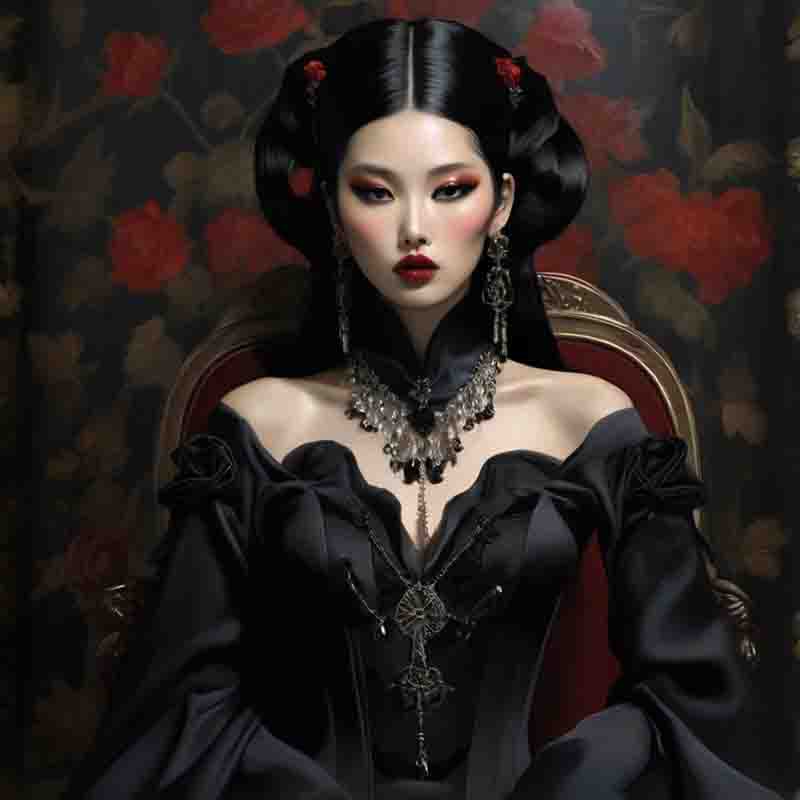
Gothic fashion is characterized by a dark and mysterious aesthetic, often featuring black clothing, leather, lace, and metal accessories.
Gothic Architecture: A Testament to Grandeur
Gothic architecture, with its towering cathedrals and intricate detailing, stands as a testament to the grandeur of the medieval era.
Emerging in the 12th century, Gothic architecture introduced revolutionary design elements.
Pointed arches, ribbed vaults, and flying buttresses not only supported the massive structures but also allowed for unprecedented height and light.
Notable examples include Notre-Dame Cathedral in Paris and Westminster Abbey in London.
These cathedrals were not merely places of worship; they were expressions of spiritual and divine aspirations.
The symbolism embedded in Gothic architecture, from the upward-reaching spires to the delicate tracery of stained glass windows, reflected a deep connection between the earthly and the divine.
The Flourishing of Gothic Art: Painting, Sculpture, and Manuscripts
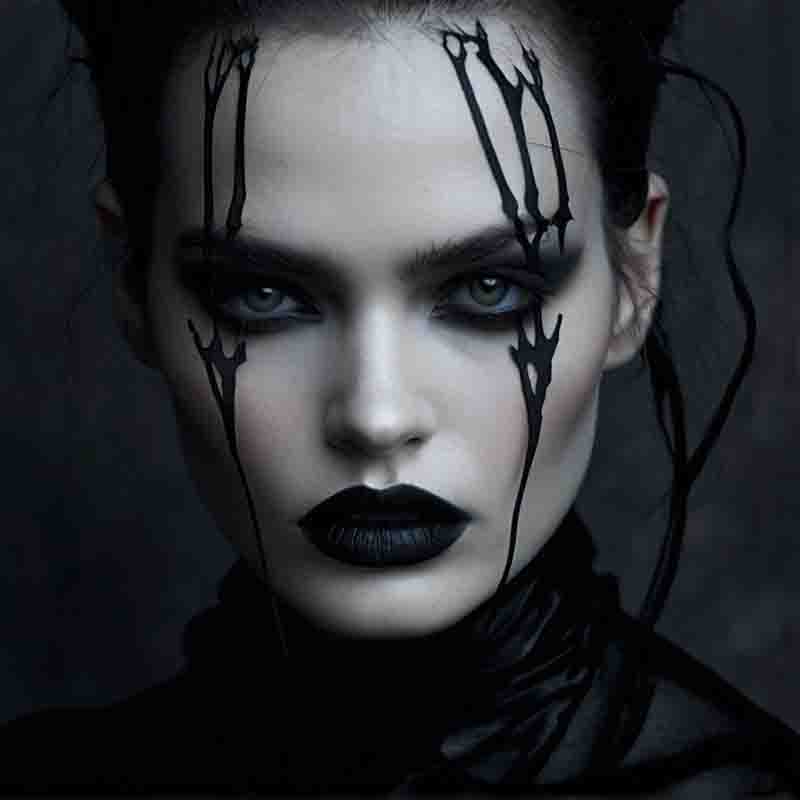
From the punk rebellion of the 1970s to the industrial aesthetic of the 1980s and the cyberpunk futurism of the 1990s, gothic fashion has incorporated elements from various countercultural movements and integrated them into its versatile style.
As the architectural marvels of the Gothic era reached new heights, so too did the artistry of the time.
The transition from the Romanesque style to the Gothic saw a shift in artistic sensibilities.
Gothic art embraced a more naturalistic approach, with a focus on expressing human emotion and capturing the intricacies of the world.
Illuminated manuscripts, adorned with intricate calligraphy and vivid illustrations, became a hallmark of Gothic artistry.
Figures like Giotto and Jan van Eyck emerged, leaving an indelible mark on painting and sculpture.
Gothic art, with its emphasis on emotion, symbolism, and meticulous craftsmanship, laid the foundation for the Renaissance that followed.
Gothic Literature: From Medieval Epics to Modern Novels
The emergence of Gothic literature in the 18th century marked a literary revolution that delved into the darker recesses of the human psyche.
Horace Walpole's "The Castle of Otranto" is often regarded as the first Gothic novel, introducing themes of mystery, romance, and the supernatural.
Mary Shelley's "Frankenstein" and Bram Stoker's "Dracula" further cemented the genre's prominence, exploring the profound and often unsettling aspects of human nature.
Gothic literature became a vessel for societal anxieties, delving into forbidden desires, the unknown, and the macabre.
As the genre evolved, it spawned a lineage of influential literary figures, including Edgar Allan Poe and Ann Radcliffe, whose contributions shaped the Gothic narrative for generations to come.
Gothic Revival: The 19th-Century Renaissance
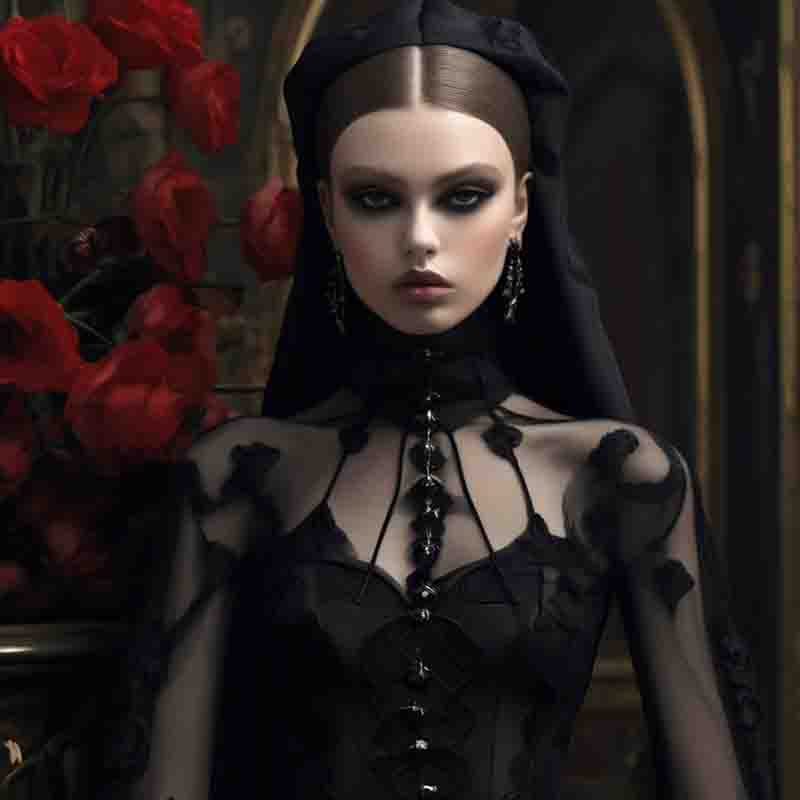
One of the defining features of Gothic fashion is its embrace of historical elements, particularly those associated with the Victorian era.
The 19th century witnessed a renaissance of Gothic aesthetics, known as the Gothic Revival.
As societal and industrial changes swept through Europe, a yearning for the romanticized past gave rise to a renewed interest in medieval architecture and design.
Architects like Augustus Pugin championed the revival, advocating for a return to the craftsmanship and ornamentation of the Gothic era.
The revival extended beyond architecture, influencing literature, fashion, and the arts.
The works of the Pre-Raphaelite Brotherhood, with their medieval-inspired themes and attention to detail, exemplified the Gothic Revival's impact on the cultural landscape.
This period not only preserved the architectural heritage of the Gothic but also propelled it into a new era of appreciation and reinterpretation.
Gothic Fashion: Dark Elegance and Subversive Style
Gothic fashion emerged as a subversive and expressive movement that transcended mere clothing choices.
With its roots in Victorian influences, Gothic fashion embraced dark elegance, incorporating corsets, lace, and rich, dark color palettes.
The 20th century witnessed the evolution of Gothic fashion into a diverse and avant-garde subculture.
DIY customization became a hallmark, allowing individuals to create personalized and unique expressions of Gothic style.
The subculture's impact on mainstream fashion is undeniable, influencing advertising campaigns and contributing to contemporary trends.
Gothic fashion is not merely an aesthetic choice; it's a statement of rebellion and individuality that continues to resonate across cultural landscapes.
Gothic in the 20th Century: From Literature to Subcultures
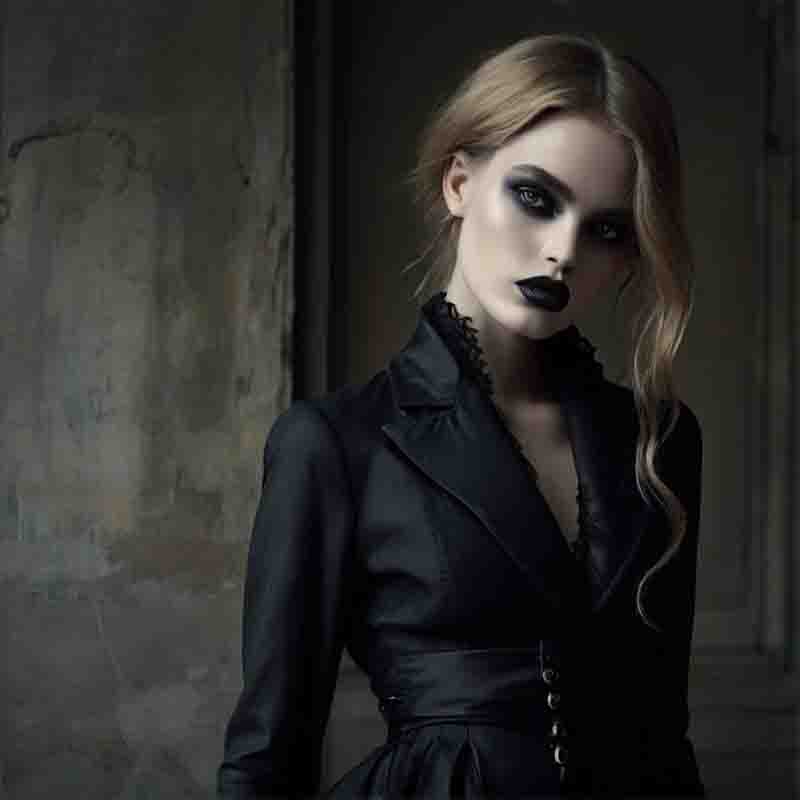
Gothis fashion serves as a form of self-expression and identity, allowing individuals to explore themes of darkness, beauty, and the supernatural through their clothing and accessories.
The 20th century ushered in a myriad of Gothic influences that extended beyond literature.
Southern Gothic literature emerged, exploring the eerie and grotesque aspects of the American South.
Dark romanticism found a place in literature, emphasizing the mysterious and sublime.
The Gothic subcultures of the 20th century, including goth music and lifestyle choices, embraced and reinterpreted Gothic themes for a modern audience.
The influence of Gothic aesthetics expanded to film, with iconic movies like "Nosferatu" and "The Cabinet of Dr. Caligari" shaping the visual language of the genre.
Contemporary Gothic: Trends, Influences, and Innovations
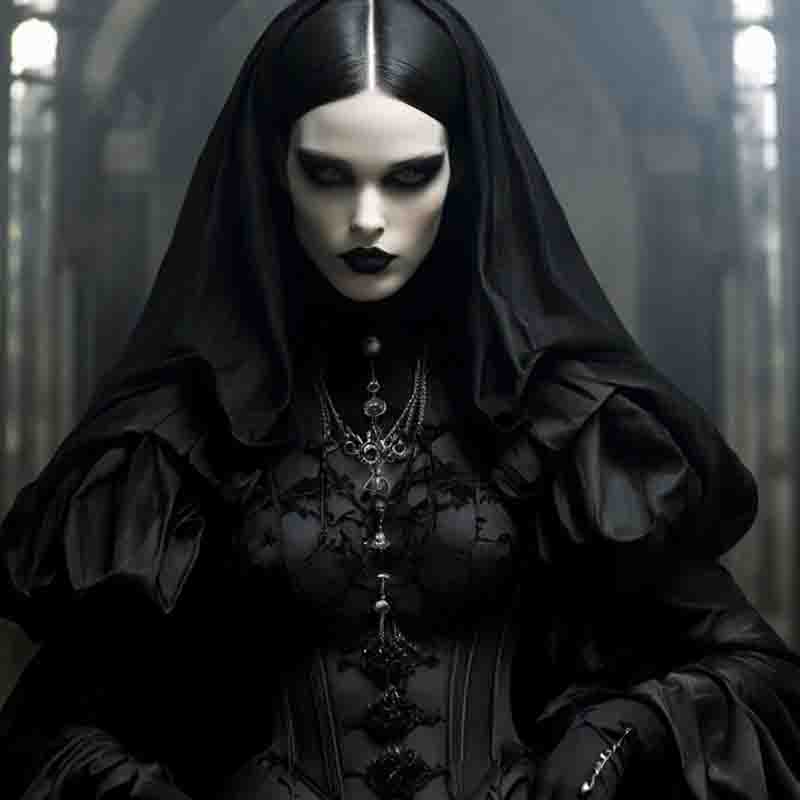
Gothic fashion is more than just a style; it is a way of life, a community, and a sanctuary where like-minded individuals can find acceptance and belonging.
In the contemporary landscape, Gothic themes continue to evolve and adapt.
Current trends in Gothic-inspired home decor, fashion, and lifestyle reflect a fusion of historical influences and modern sensibilities.
Technology and cyber aesthetics intersect with Gothic themes, creating innovative expressions of the dark and mysterious.
The ongoing impact of Gothic on pop culture is evident in social media, where influencers curate content that resonates with Gothic aesthetics.
Origins of Gothic Architecture
The term "Gothic" was initially used pejoratively to describe what was considered barbaric or unrefined.
Over time, however, Gothic architecture became associated with grandeur, innovation, and a distinct departure from earlier architectural norms.
The Gothic style's legacy extended beyond Europe, influencing architectural movements worldwide.
Elements of Gothic architecture can be observed in structures as diverse as churches, universities, and government buildings, showcasing the enduring impact of this innovative and captivating architectural style.
Key Characteristics
-
Pointed Arches: One of the defining features is the use of pointed arches. Unlike the rounded arches of Romanesque architecture, the pointed arches in Gothic structures provided a sense of verticality and allowed for greater height in buildings.
-
Ribbed Vaults: Gothic architecture introduced ribbed vaults, a system of interconnected arched ribs that supported the ceiling. This innovation distributed weight more effectively, enabling the construction of taller and more open spaces.
-
Flying Buttresses: Perhaps the most iconic feature, flying buttresses were external arches that provided additional support to the walls. They transferred the thrust of the roof's weight outward, reducing the need for thick walls and allowing for larger windows.
-
Gothic Windows: Large, elaborate windows with intricate tracery became a hallmark of Gothic architecture. These windows, often in a pointed shape, allowed for increased natural light, creating a more luminous and awe-inspiring interior.
Key Structures
-
Chartres Cathedral (France): Dating back to the 13th century, Chartres Cathedral is a masterpiece of French Gothic architecture. It showcases innovations like the use of flying buttresses and stunning stained glass windows, making it a UNESCO World Heritage Site.
-
Notre-Dame de Paris (France): Built between the 12th and 14th centuries, Notre-Dame de Paris is an iconic example of French Gothic architecture. Its impressive facade, rose windows, and intricate sculptures exemplify the grandeur of the style.
-
Westminster Abbey (England): While incorporating earlier Romanesque elements, Westminster Abbey underwent significant Gothic transformations in the 13th century. The Henry VII Chapel is a later example of Perpendicular Gothic style within the complex.
-
Cologne Cathedral (Germany): Construction began in the 13th century, and Cologne Cathedral represents the epitome of German High Gothic architecture. Its intricate detailing and towering spires make it a UNESCO-listed masterpiece.
-
Milan Cathedral (Italy): Although Italy was not a stronghold of Gothic architecture, Milan Cathedral is a notable exception. Its flamboyant Gothic style, particularly in the facade and spires, distinguishes it from traditional Italian architecture
The innovations in Gothic architecture not only transformed the physical aspects of buildings but also influenced the philosophy of construction. The emphasis on height, light, and structural innovation laid the groundwork for further architectural developments in the Renaissance.
Gothic Literature: Unveiling the Shadows of the Imagination
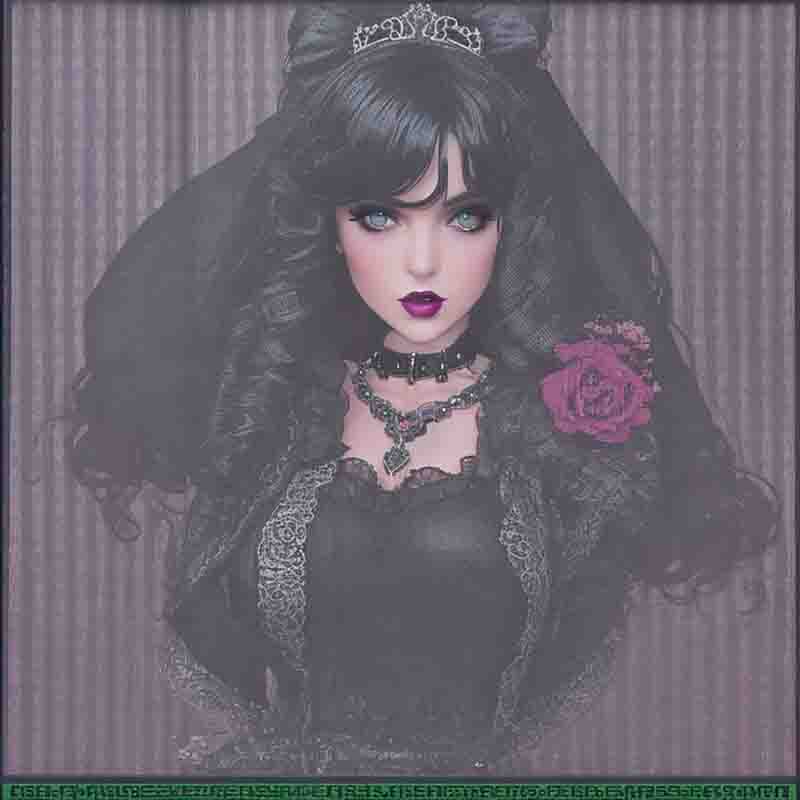
Gothic fashion is characterized by a dark and mysterious aesthetic, often featuring black clothing, leather, lace, and metal accessories.
At the heart of the Gothic realm lies its literary origins, where brooding landscapes, mysterious castles, and tortured protagonists intertwine.
The classic Gothic novels of the 18th and 19th centuries, from Horace Walpole's "The Castle of Otranto" to Mary Shelley's "Frankenstein" and Bram Stoker's "Dracula," set the stage for a genre characterized by elements of horror, romance, and the supernatural.
The enduring appeal of Gothic literature lies in its ability to tap into the darker recesses of the human psyche.
Themes of isolation, forbidden desires, and the confrontation of mortality weave a complex tapestry that explores the intricacies of human existence.
Contemporary authors, from Anne Rice to Neil Gaiman, continue to breathe new life into Gothic literature, infusing it with modern sensibilities while retaining the timeless allure of the macabre.
Gothic Rock Music
Gothic rock emerged in the late 1970s as a subgenre of post-punk.
Bands sought to incorporate darker and atmospheric elements into their music, drawing inspiration from gothic literature, horror films, and the macabre.
-
Bauhaus: Bauhaus is often credited with laying the foundation for gothic rock. Their debut single "Bela Lugosi's Dead" (1979) is considered an iconic track that captures the essence of the genre.
-
Siouxsie and the Banshees: Siouxsie and the Banshees played a pivotal role in the early development of gothic rock. Albums like "Juju" (1981) and "A Kiss in the Dreamhouse" (1982) showcased Siouxsie Sioux's haunting vocals and the band's experimental sound.
-
The Sisters of Mercy: The Sisters of Mercy brought a fusion of gothic rock and industrial elements to the genre. Their debut album "First and Last and Always" (1985) featured Andrew Eldritch's deep vocals and atmospheric soundscapes.
-
The Cure: The Cure, while incorporating pop and new wave elements, made significant contributions to gothic rock. Albums like "Pornography" (1982) and "Disintegration" (1989) showcase Robert Smith's introspective lyrics and the band's atmospheric sound.
-
Fields of the Nephilim: Fields of the Nephilim embraced a western gothic aesthetic, combining gothic rock with elements of spaghetti westerns. Their album "The Nephilim" (1988) is notable for its atmospheric sound and Carl McCoy's distinctive vocals.
-
The Mission: Formed by former members of The Sisters of Mercy, The Mission (UK) combined gothic rock with a more mainstream rock sound. Their album "God's Own Medicine" (1986) features anthemic tracks and Wayne Hussey's distinctive vocals.
-
Southern Death Cult (Later became The Cult): Southern Death Cult, later evolving into The Cult, incorporated gothic and tribal elements in their early work. Songs like "She Sells Sanctuary" (1985) showcase their blend of rock and gothic influences.
In the late 20th century and into the present, gothic rock diversified into subgenres such as darkwave, ethereal wave, and gothic metal. Bands like Dead Can Dance, Type O Negative, and Lacrimosa contributed to this evolution. Modern acts continue to experiment with the gothic aesthetic, incorporating electronic elements, symphonic arrangements, and diverse influences.
The Enduring Allure of the Gothic
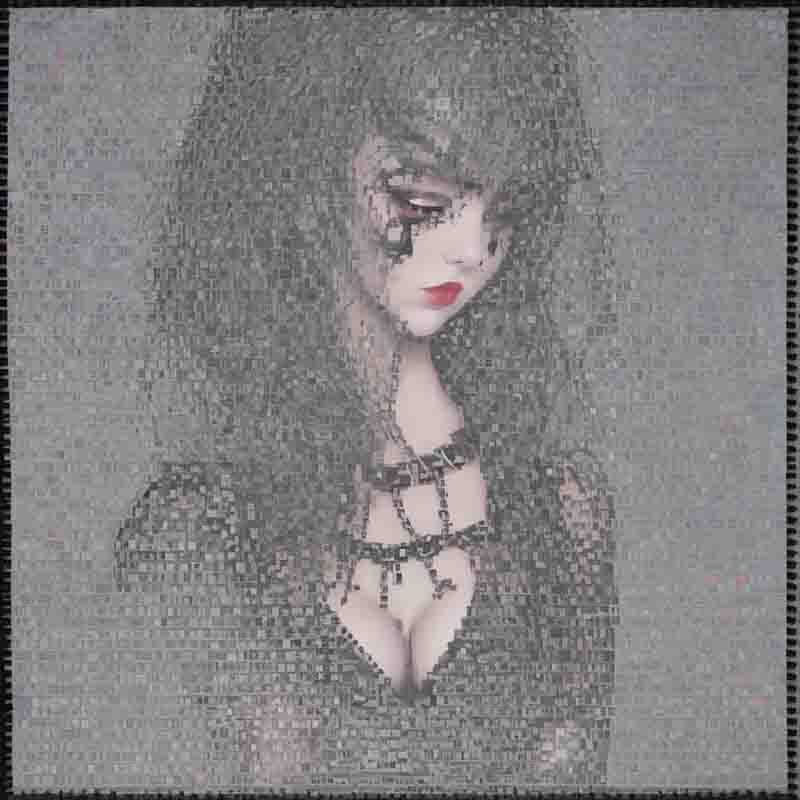
In the dark recesses of literature, fashion and cultural manifestation, the gothic genre emerges as a haunting and enduring force that passes through time.
The journey through the Gothic spans centuries and traverses multiple facets of human expression.
From historical foundations to architectural marvels, from literature to fashion and subcultures, the Gothic endures as a complex and ever-evolving phenomenon.
Its enduring allure lies in its ability to transcend time, inviting individuals to explore the shadows where the past converges with the present.
The Gothic is not a mere historical relic; it is a living, breathing force that continues to captivate, inspire, and challenge our understanding of beauty, darkness, and the sublime.
The term Gothic has evolved into a descriptor for a range of expressions that share an aesthetic and thematic affinity for the mysterious, the dark, and the unconventional.
Gothic: FAQ
Are you curious about music, art, technology, fashion, lifestyle, and beer?
If so, then you need to subscribe to the free Likewolf newsletter.
100% privacy. When you sign up, we'll keep you posted.
Folklore and Mythology
Window To Your Soul
